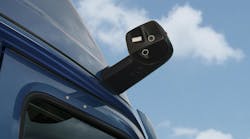FORT LAUDERDALE. Want to reduce equipment breakdowns and maintenance costs? A shorter vehicle lifecycle might be something to consider.
Mike Spence, senior vice president of fleet services at Fleet Advantage, said maintenance costs for vehicles aged 4-6 are 2.75 times higher than they are in years 1-3. Spence was speaking to clients and attendees at Fleet Advantage’s Changes in Attitudes Fleet Conference in Fort Lauderdale.
Fleet Advantage specializes in truck fleet business analytics, equipment financing and lifecycle management.
Besides cost savings, Spence noted that shorter-term vehicle lifecycles also help bring in new technology more frequently.
“Newer trucks significantly reduce your maintenance costs, but a fleet has to see if that will fit their model,” Spence said. “You’ve got to make sure that you’ve got the data to make the decisions when it comes time to do maintenance.”
Data-driven lifecycle management will tell you how long you should run a truck, he added. He noted that maintenance and repair (M&R) costs will increase dramatically after years 3-4. Replacing a truck on a four-year lifecycle lowers M&R costs by 4.63 cents per mile or $37,040 a year ($386/month), Spence explained.
According to Spence, intangible benefits of shorter lifecycle include:
- Reduction in fleet size
- Reduction in maintenance personnel
- Improved safety across fleet
- Reduction in CO2 emissions
- Improved driver reports
- Improved driver morale
- Improved company image
“Another big piece of having a good maintenance program is making sure you have some kind of process you go through that identifies just how good your maintenance process is,” Spence said, adding that it is important to identify the root cause of each road failure to eliminate future breakdowns.
“What happened, why did it happen, and what do we need to do to keep it from happening again,” he said. “Breakdowns miss delivery windows, have drivers stranded, and make drivers angry. Newer units will experience fewer breakdowns.”
“If you experience more than one breakdown per year per truck, there is something wrong,” he continued. “The trucks are leaving the shop with some kind of problem.”
When it comes to increasing reliability and lowering maintenance costs, Spence said spec’ing and preventive maintenance (PM) intervals are crucial. The more money fleets spend on PM, he said, the lower their overall maintenance costs will be.
Here are some preventive maintenance tips:
- Only do what’s absolutely necessary to get the vehicle safely to the next scheduled maintenance interval
- Develop a step-by-step PM process. “You can’t just shotgun a PM program if you really want to reduce your cost,” he said. “Spend three or four hours going through a distinct process making sure [a vehicle] will run to the next PM interval.”
- Build specifications to data-driven asset life. And don’t spec a truck too highly, he said.
- Maintenance currency has to be 100% compliant. “You can’t let a truck run 100,000 miles without changing the oil,” he explained. “You’ve got to have a good process in place to catch those trucks before they run over the interval.”
- Outsource major repairs (most will be under warranty). The dealerships and engine manufacturers know how to schedule those, Spence explained.
- Focus on uptime. Don’t spend any time on downtime, he said. “If you do the PM right that truck will be up the majority of the time,” he explained.




